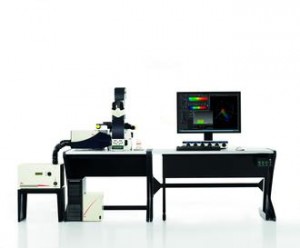NSF Major Research Instrumentation Grant Funded!
Last week we finally got our award notice from the NSF, indicating that our proposal for a confocal microscope had been funded!
In a few months, a Leica SP8 scanning confocal microscope with a white light laser will be added to our Imaging Center and will expand teaching and research opportunities in fluorescence and interference-reflection microscopy. This particular Leica microscope is one of the most versatile commercially available confocal platforms, with a wide range of adjustable excitation wavelengths and ability to capture emission spectra at either 5 simultaneous channels or up to 400 sequential channels. In the State of Maine, this system will be only one of two with such versatility, with the other housed at the Jackson Laboratories, a minimum drive of 2 hours and 45 minutes from Bates.
The confocal microscope will enhance and broaden microscopy applications available through the College’s Imaging Center and permit four main research projects in biology, neuroscience, chemistry, and physics. In my lab we will use transgenic zebrafish to study the development of the ear and swim bladder. In biology and neuroscience, Nancy Kleckner will characterize the neurons involved in rhythmic motor behaviors in mollusks and other animals. Matt Côté of chemistry will study gold nanorods, while Travis Gould in physics will use the microscope to determine the molecular photophysics of fluorophores. The microscope is expected to be used on semi-regular basis by at least five other faculty from Bates College and Bowdoin College in their research. In the classroom, confocal microscopy will become an immediate and integral tool in courses and be used in demonstrations in introductory physics and biology courses, affecting the education of more than 300 students per year. The microscope will also enhance Bates College’s partnership with Southern Maine Community College by training and supporting the research of their faculty and students in workshop and research settings. Given that Bates has not previously had a confocal microscope, its impact on research and curriculum is expected to be large and complementary to existing platforms.
Stay tuned for amazing data to come!
